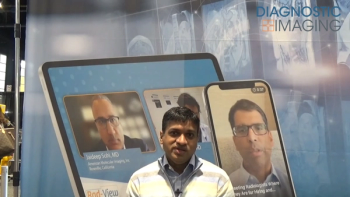
Free software may enable teleradiology in any PACS
PACS administrators can now install freely available software into their workstations that allows remote users to view PACS desktop environments from anywhere on the Internet. The software allows even those institutions with slow networks to bypass
PACS administrators can now install freely available software into their workstations that allows remote users to view PACS desktop environments from anywhere on the Internet. The software allows even those institutions with slow networks to bypass installing PACS client software into each remote location and transferring large DICOM files over those networks.
Since requirements are different for remote teleradiology workstations and PACS workstations located within the enterprise, teleradiology functionality is often an optional component of clinically oriented PACS.
Most client server-based PACS require a high-speed intranet environment to transfer DICOM images, and this infrastructure is unlikely to exist in most teleradiology networks, said Dr. Wen-Jeng Lee of the medical imaging department at National Taiwan University Hospital in Taipei.
"We cannot simply implement a teleradiology system by installing PACS client software in the remote location, because it is too time-consuming to transfer DICOM files on a low-speed network," Lee said.
As a solution, Lee suggests either of two simple, inexpensive methods to add teleradiology functionality to any existing PACS.
His first suggestion is to use Virtual Network Computing software (free from AT&T Laboratories, Cambridge, U.K.), a remote display system that allows the user to view a computing "desktop" environment from anywhere on the Internet and from a wide variety of machine architectures.
The other method is to use Remote Desktop (Microsoft, U.S.), with which any PACS workstation running Windows XP Professional can be viewed from any other client running a Microsoft Windows operating system.
These methods enable a remote desktop listener on the diagnostic workstation, and neither requires any hardware cost, Lee said.
Using remote desktop connection protocol, only the keyboard input, mouse input, and display output data are transmitted over the network to the remote location.
"Most Web-based PACS applications are designed for clinical review," Lee said. "Diagnostic workstations designed for radiologists are constructed based on client server technology due to complicated image processing functions."
Because only the display result is transmitted, the operation can work efficiently in a number of different environments, according to Lee's research.
"With this model, which is useful in both clinical and academic settings, radiologists can freely perform their job wherever they happen to be," he said.
Newsletter
Stay at the forefront of radiology with the Diagnostic Imaging newsletter, delivering the latest news, clinical insights, and imaging advancements for today’s radiologists.



























